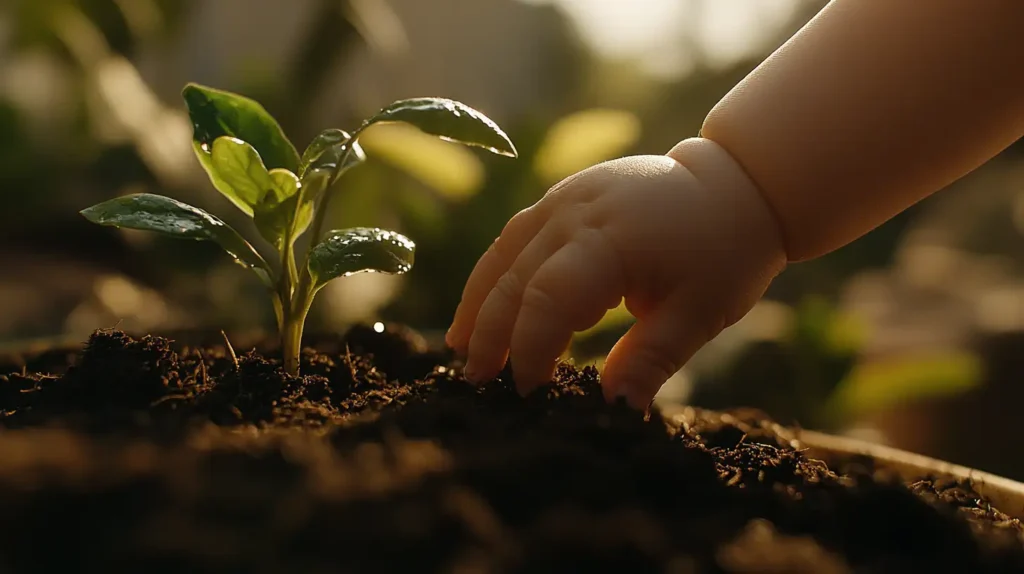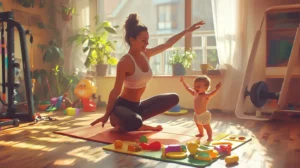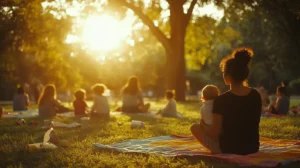Table of Contents
ToggleFrom Tiny Seeds to Tiny Hands: How Your Baby’s First Garden Can Change Everything
Give me 10 minutes, and I’ll transform how you think about your baby’s relationship with nature. Have you ever watched your little one’s eyes light up when they touch a leaf for the first time? Or noticed how they become completely mesmerized by the simplest things—like soil running through your fingers or water droplets catching sunlight? What if I told you these small moments could be the foundation for something truly extraordinary in your child’s life?
I discovered this by accident one humid afternoon when my 7-month-old daughter wouldn’t stop fussing. I was trying to plant some herbs in our tiny balcony garden, and in desperation, I sat her down next to me in her bouncer. Something magical happened. She stopped crying immediately, completely captivated by the rustling leaves and the sensation of the cool soil I let her touch with her tiny fingers.
That moment changed everything about how I approached parenting. It made me realize that our babies aren’t just passive observers—they’re born explorers, eager to connect with the natural world around them. And here’s what many of us are missing: you don’t need to wait until they’re walking and talking to introduce them to gardening.
The truth is, I used to overthink everything about parenting. I thought I needed special equipment, perfect timing, and expert knowledge before introducing my baby to gardening. I worried about dirt, germs, and whether she was too young to benefit. But caring too much about getting it perfect was just holding us back from experiencing something beautiful together.
So I made a change. I stopped caring about having a picture-perfect garden. I stopped worrying about her getting a little soil on her hands. I stopped caring about what other parents might think when they saw my infant helping me plant seeds. And really, this changed everything for us.
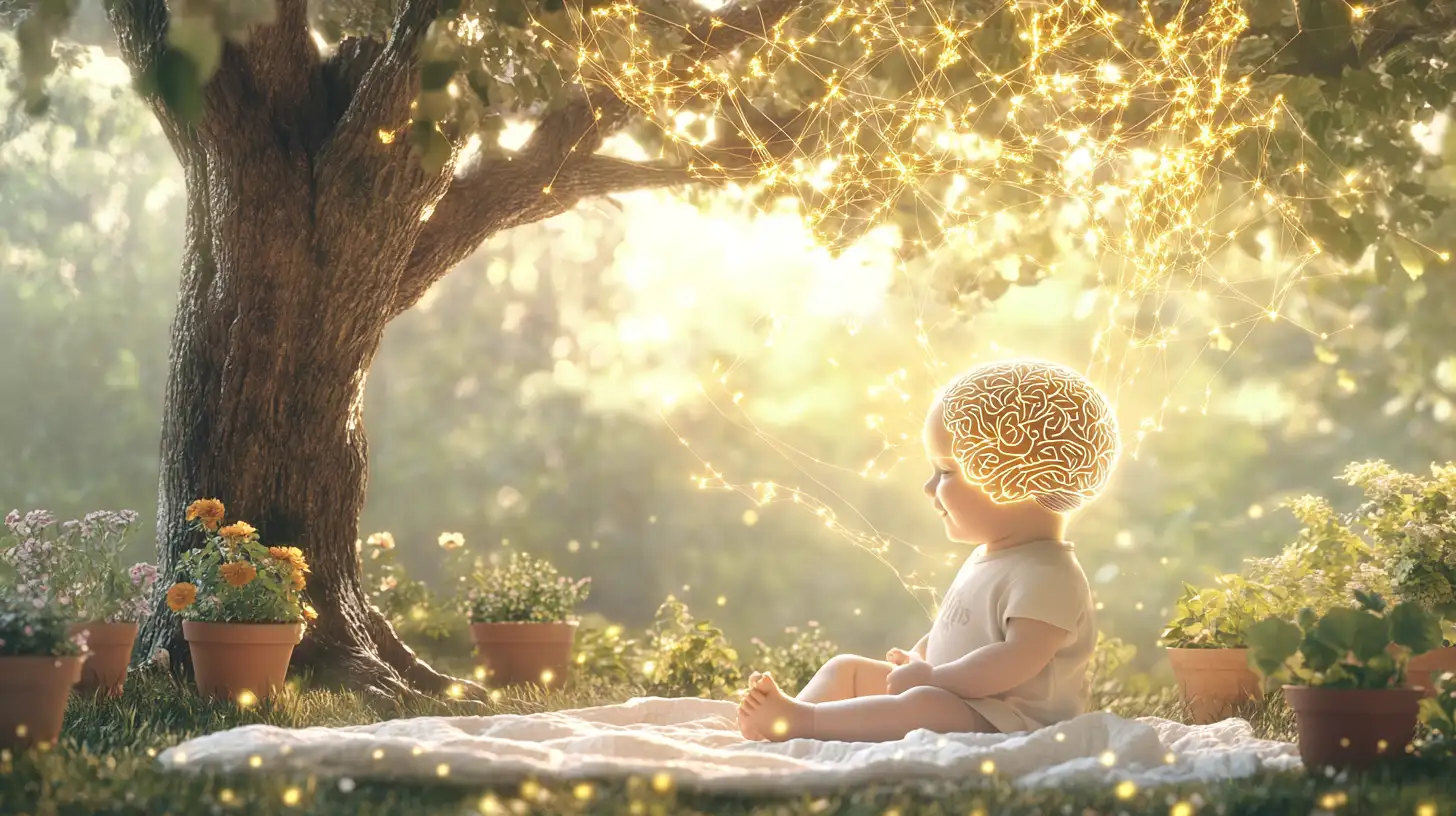
Why Mother Nature Might Be Your Baby’s Best Teacher
Let me share something with you that pediatric experts are just beginning to fully appreciate. The first year of your baby’s life is an explosion of neural connections—with their brain developing faster than at any other time. During this critical window, sensory experiences don’t just entertain your baby—they literally shape the architecture of their developing brain.
When your little one feels the different textures of soil, leaves, and fruit, when they smell the distinctive scents of herbs and flowers, when they see the vibrant colors of ripe vegetables—they’re not just having fun. They’re building neural pathways that will support everything from scientific thinking to emotional regulation.
But here’s what I’ve learned that changed my approach completely: the benefits go far beyond just sensory development. Creating early positive associations with healthy foods can transform your child’s eating habits for life. Studies show that children who grow their own food are significantly more likely to try and enjoy eating fresh fruits and vegetables.
My daughter’s first word wasn’t mama or dada—it was her version of berry after spending countless mornings helping me pick strawberries from our container garden. Now at three years old, she eagerly eats vegetables that make other parents at playgroups shake their heads in disbelief.
And the benefits extend even further. Early exposure to beneficial soil bacteria may help strengthen your baby’s developing immune system. Time spent outdoors in natural light helps regulate sleep cycles. The calm, repetitive nature of gardening activities can be incredibly soothing for both babies and parents.
But the biggest mistake most parents make? We think babies are too young to participate meaningfully in gardening. We believe we need to wait until they’re older to introduce these experiences. In reality, even the youngest infants can engage with and benefit from gardening—it just looks different than it does with older children.
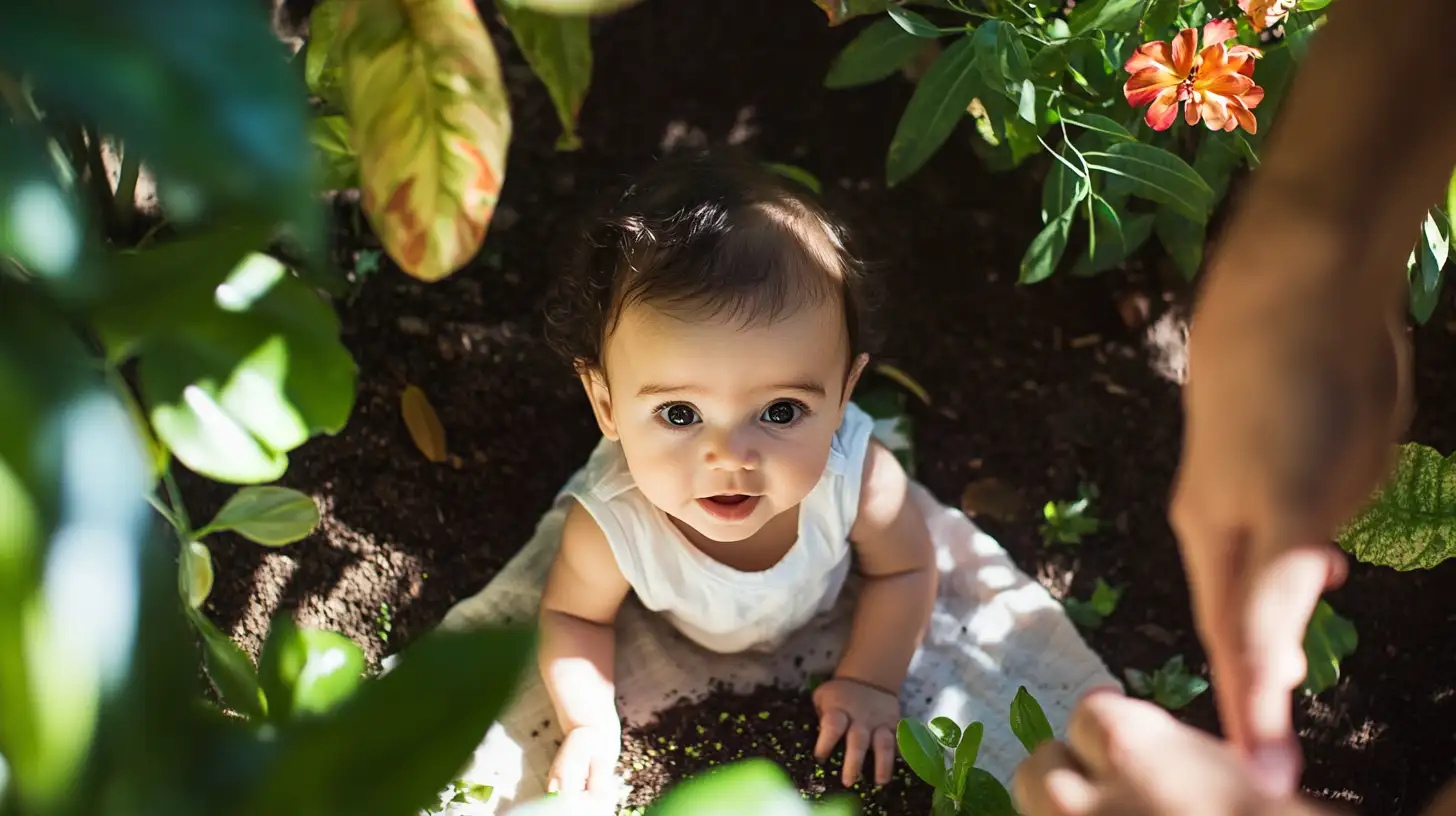
Starting Where They Are: Gardening with Your Pre-Crawler
Back home in Trinidad, my grandmother would lay her babies on a clean blanket under the mango tree while she tended her garden. She instinctively knew what research now confirms—babies don’t need to actively participate to benefit from nature.
For your youngest babies (0-6 months), gardening is primarily about exposure and observation. Their developing senses are drinking in everything around them, even when they can’t yet crawl or grab. Here’s how to start:
- Create a comfortable outdoor observation spot using a blanket under a shady tree, a bouncer positioned safely near your garden bed, or wear your baby in a carrier while you work
- Narrate what you’re doing in simple, engaging language: Mommy’s planting basil seeds. They’re so tiny! Soon they’ll grow into big green plants that smell amazing.
- Let them experience nature’s soundscape—rustling leaves, singing birds, the soft patter of water from a watering can
- Safely introduce sensory experiences by gently brushing soft leaves against their hands or letting them smell an aromatic herb like mint or basil
I remember the first time I held a fragrant sprig of lemongrass near my daughter’s nose. Her eyes widened with such intensity, like she had discovered a whole new dimension of experience. These moments might seem small, but they’re forming your baby’s first impressions of the natural world.
The secret I wish someone had told me sooner? Don’t worry about how much they’re understanding or whether they seem interested every time. Just like language exposure, these early experiences are being absorbed even when it’s not obvious. You’re planting seeds in more ways than one.
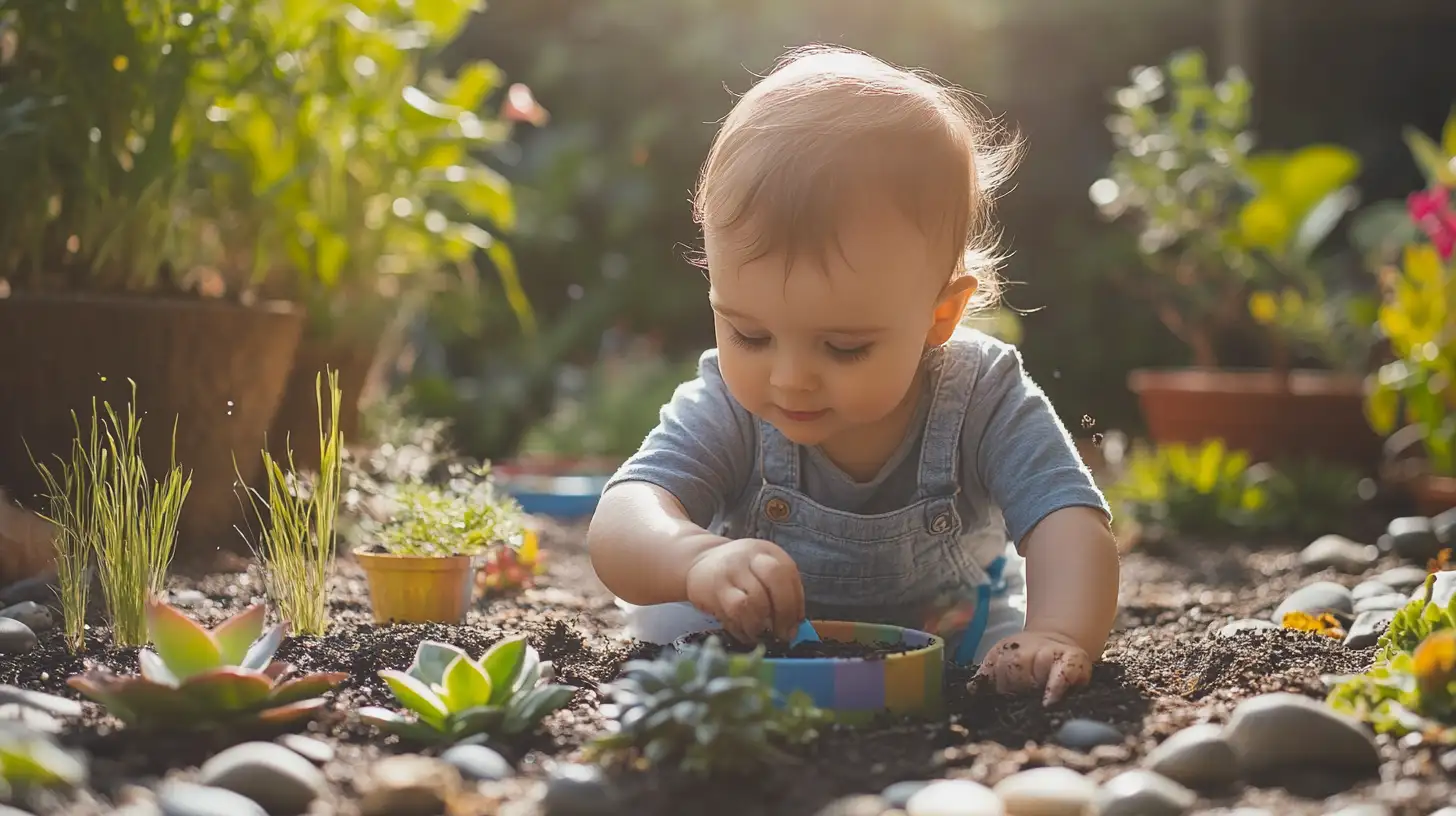
Hands in the Earth: Gardening with Your Crawler and Early Walker
Something fascinating happens around 6-12 months. Suddenly, your baby doesn’t just want to observe—they want to touch, grab, and experience everything directly. This is when gardening becomes a full-body sensory adventure!
When my daughter reached this stage, I created what I call baby exploration zones right next to my actual garden beds. This gives them the freedom to explore safely while you can still get some actual gardening done. Here’s how:
- Fill a wide, shallow container with clean potting soil and place it where your baby can safely explore
- Add nature-based treasures for discovery—large smooth stones, sturdy plant parts like coconut shells, thick bark pieces, or drought-resistant succulents
- Introduce water play with a small watering can or spray bottle (the perfect way to practice fine motor skills)
- Plant hardy, non-toxic options that can withstand enthusiastic handling—wheatgrass grows quickly and can handle being patted, pulled, and investigated
I’ll never forget the day my daughter discovered she could scoop soil with a small plastic cup. The look of pure concentration on her face as she filled it, then dumped it out, then filled it again—thirty times in a row!—reminded me that what looks like simple play to us is serious learning for them.
But here’s the thing about gardening with babies this age. They care, but they’re not attached to the outcome. They’re completely present in the sensory experience of that moment—the feel of soil, the sound of leaves rustling, the sight of water droplets catching sunlight. And we can learn from them.
Because when we stop fixating on perfect gardens and start appreciating the process, we not only enjoy gardening more—we also give our children the gift of mindfulness from the very beginning. They learn that connection with nature is about being present, not about achieving specific results.
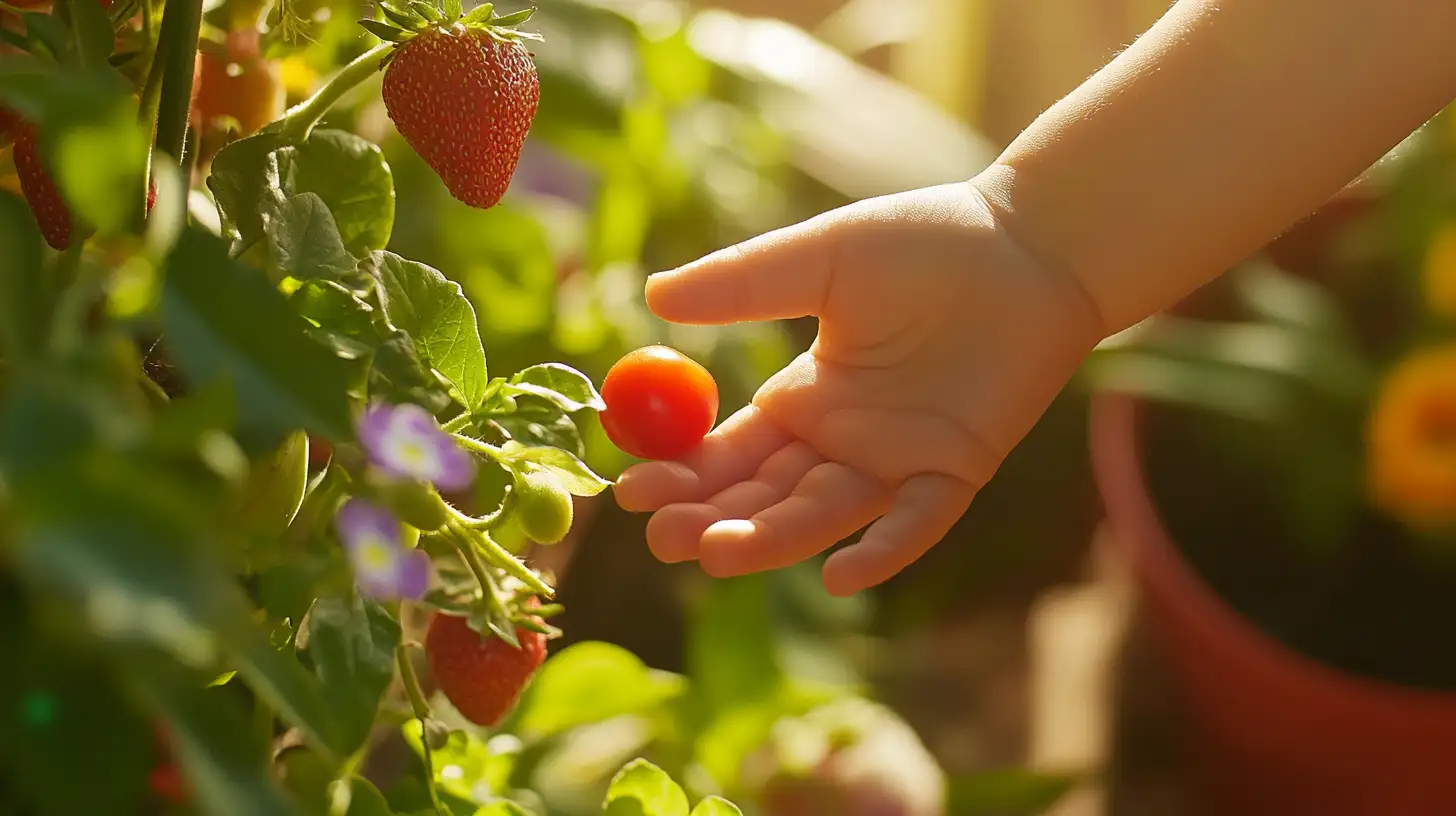
Edible Adventures: Introducing Food Gardens to Your Little One
Around my daughter’s first birthday, something clicked for me. If she was this fascinated by the gardening process, why not focus on foods she could eventually eat? This began our most rewarding gardening chapter—creating an edible landscape designed with baby in mind.
Here’s what works beautifully for the 12-24 month crowd:
- Cherry tomatoes in hanging baskets—perfect for little hands to pick (under supervision for younger babies)
- Strawberries in containers—low-growing, colorful, and produce fruits throughout the season
- Bush beans—quick to grow from large, easy-to-handle seeds and fascinating pods to discover
- Herbs like mint, basil, and lemongrass—provide amazing sensory experiences through smell alone
- Edible flowers like nasturtiums and pansies—beautiful, safe to taste, and magical for little ones
Back in my grandmother’s garden in Trinidad, we grew callaloo, a nutritious leafy green that’s incredibly easy to grow and perfect for babies transitioning to solid foods. The leaves are soft enough for small fingers to tear and explore, making them perfect for sensory play that transitions naturally to healthy eating.
The more desperate sometimes you are to get your child to eat vegetables, the more resistance you might face. But when children grow their own food, something shifts. There’s ownership, connection, and curiosity that naturally leads to willingness to taste.
My daughter wouldn’t touch green beans that came from the store, but the ones she helped grow and pick? Those became her favorite snack. Because by detaching from the outcome and focusing on the experience, everything changed. The power of growing food with your baby isn’t just in the nutritional value—it’s in the relationship they develop with food from the very beginning.
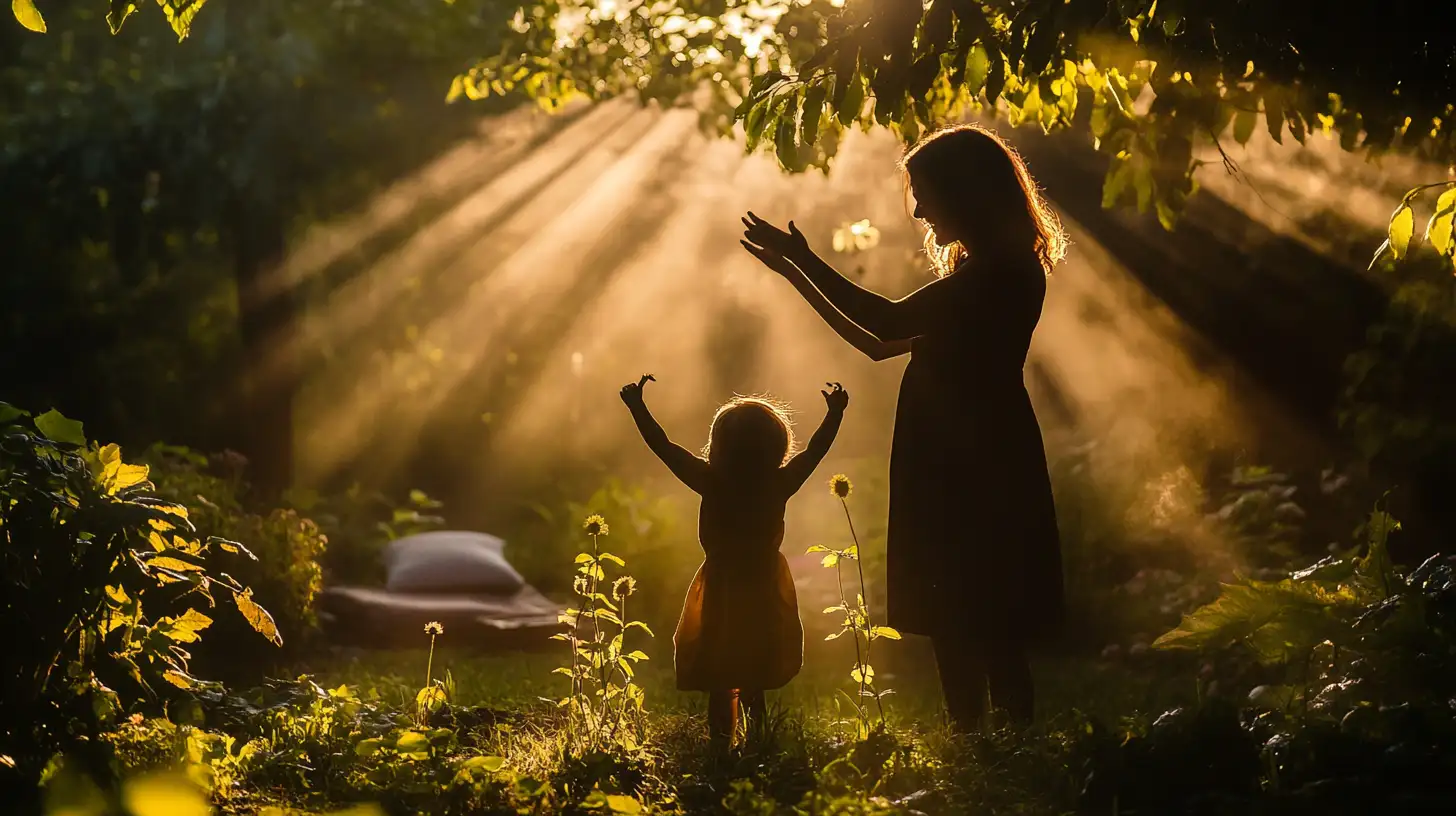
Creating Magical Garden Moments That Grow With Your Child
I used to think gardening with my baby would be a cute photo opportunity—something to document for social media and then move on. I didn’t realize it would become the foundation for our most meaningful moments together and create traditions that would evolve as she grew.
Here are some garden rituals that can grow with your child:
- The Morning Garden Greeting—start each day with a quick visit to check what’s new, even if it’s just a minute or two
- Harvest Dance—celebrate each harvest, no matter how small, with a special song or movement
- Weather Watching—observe how plants respond to rain, sun, and wind, building early scientific thinking
- Garden Storytime—designate a special spot to read nature-themed books surrounded by growing things
- First Taste Ceremony—honor the first taste of each new food grown with a simple celebration
One of our most magical traditions started by accident when my daughter was about 18 months old. I was planting moon flower seeds, which only bloom at night, and told her they were magic seeds. Now, three years later, our magic seed planting has become a beloved ritual that happens at the start of each growing season.
Here’s the biggest secret I’ve learned about gardening with babies: It’s not really about the plants at all. It’s about connection—to nature, to food, to you. It’s about creating a space where wonder can flourish alongside your vegetables.
The best gardeners, like the best parents, care deeply but aren’t attached to perfect outcomes. They show up, give their best, and then let nature work its magic. Because they know if they’ve created the conditions for growth, they’ve already succeeded. And so have you.
Your Garden Journey Starts Now
Whenever you’re reading this, whether your baby is still growing inside you or already exploring the world around them, I want you to know something important: You don’t need a green thumb. You don’t need a big yard. You don’t need fancy equipment. You just need to begin.
Start with a single pot of basil on your windowsill. Plant one strawberry plant in a container. Grow sprouts in a jar on your kitchen counter. The size and scope don’t matter—what matters is beginning the journey.
Remember, perfectionism isn’t about trying to be perfect—it’s about never feeling like you’re good enough. I’m here to tell you that you are already enough for your child. Your willingness to try, to explore alongside them, to learn together—that’s what makes you the perfect guide for their gardening journey.
When I stopped procrastinating on embracing my own imperfect gardening skills, everything changed. My daughter didn’t see the weeds I forgot to pull or the plants that didn’t thrive. She saw magic in the seeds that sprouted, adventure in the worms we discovered, and joy in the messy process of connecting with nature.
The fear of judgment from other parents, the worry about doing it right—these are just stories we tell ourselves. The people who matter won’t mind your gardening mistakes, and the people who mind don’t matter in your gardening journey.
So why waste another moment waiting for the perfect time or the perfect space? Why not build the garden experience you actually want for your child? The one that aligns with your values, your living situation, and your vision of what connection to nature means for your family.
Your baby’s first garden might not look Instagram-perfect. There might be more soil on your baby than in the pots sometimes. The plants might not all thrive. But I promise you this—the seeds of wonder, curiosity, and connection you plant in these early experiences will grow into something more beautiful than you can imagine.
You become powerful when you stop caring about the wrong things in parenting. You become unstoppable when you focus on connection over perfection. If you’ve shown up, if you’ve tried, if you’ve created space for wonder to grow—then you have already succeeded.
Your garden journey with your baby starts now. And I can’t wait to see what grows.
Step into Sue Brown's World of Baby Care, where you'll find a treasure trove of knowledge and wisdom waiting to be explored. Sue's dedication to providing accurate and up-to-date information on baby care shines through in every article, blog post, and resource she shares. From newborn essentials to sleep training tips, breastfeeding advice to nurturing your baby's development, Sue covers a wide range of topics that are essential for every parent to know. Her warm and compassionate approach creates a sense of community and reassurance, making her website a safe haven for parents seeking guidance and support. Let Sue Brown be your partner in this beautiful journey of parenthood, as she empowers you to create a loving, nurturing, and thriving environment for your little one.
- The New Dad Transition: Supporting Partners Into Fatherhood - August 23, 2025
- Emergency Preparedness With Infants: Comprehensive Planning - August 20, 2025
- Safe Sleep Environment Updates: Latest 2025 Recommendations - August 18, 2025

